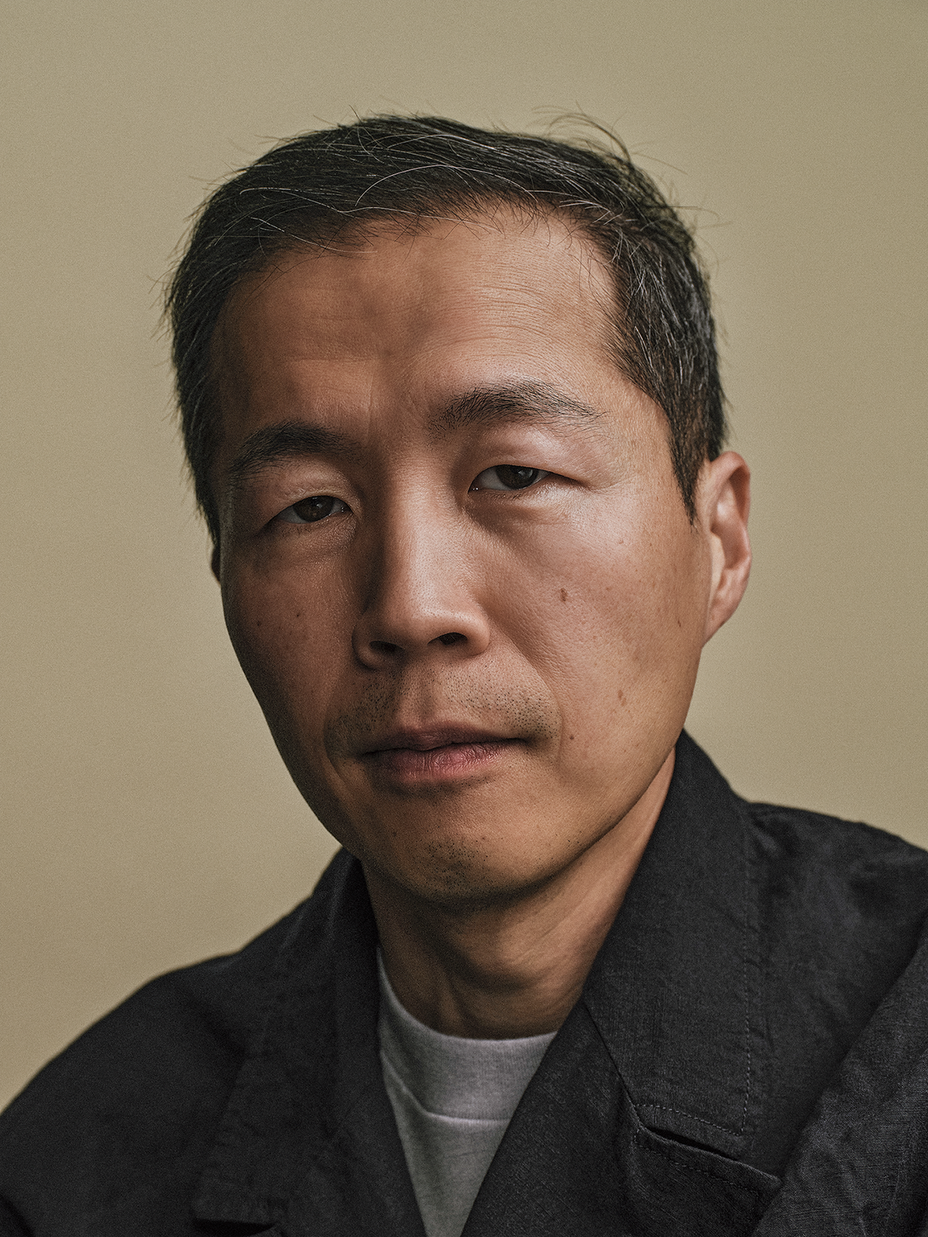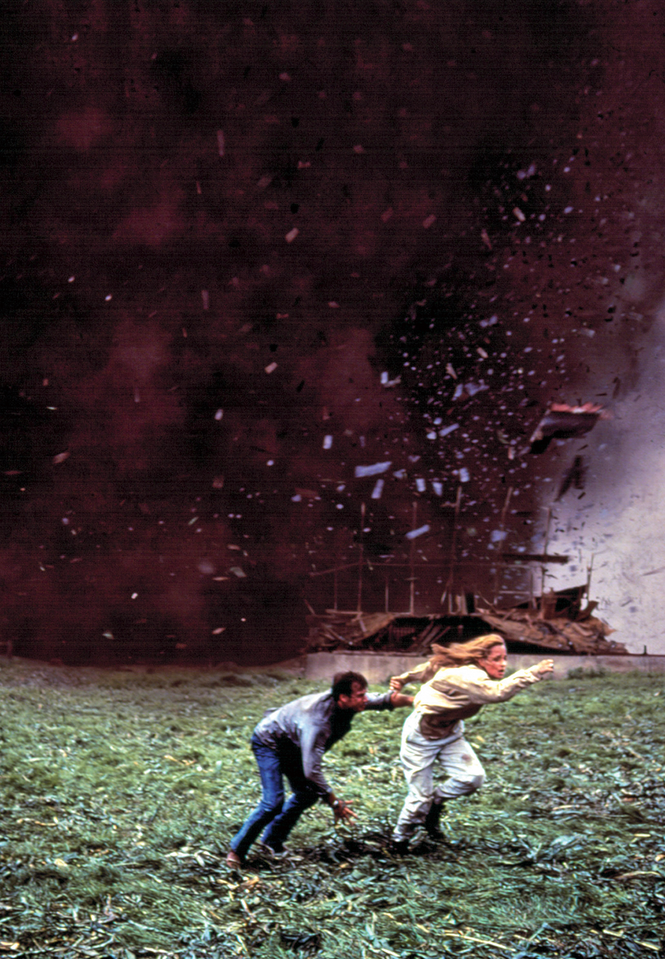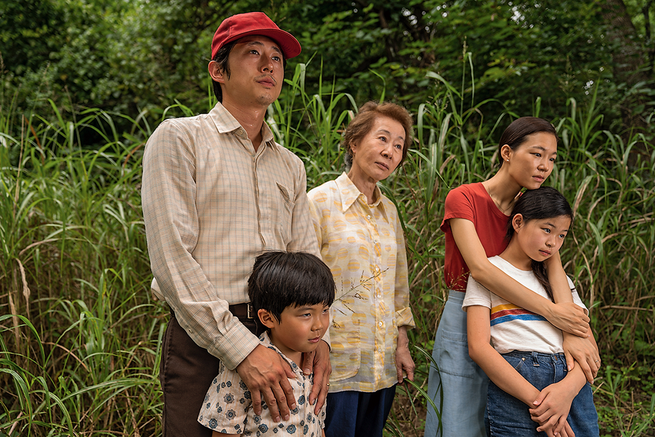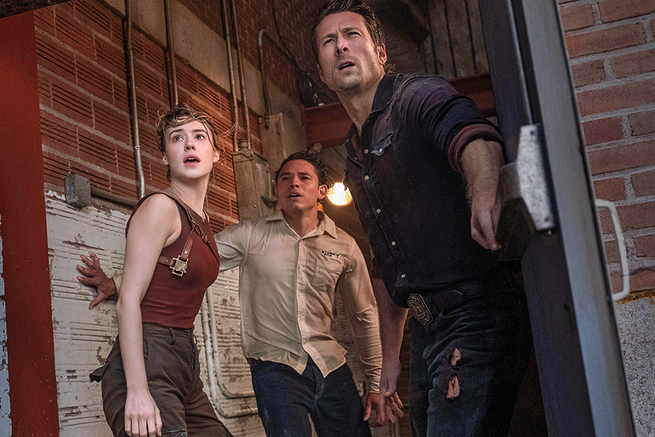Tornado Watch
9 min read
Lee Isaac Chung was a junior in high school in 1996 when he and his father walked into a theater in Fayetteville, Arkansas, to watch a movie about tornadoes. Chung was skeptical of the premise. How could you make a whole movie about this? he wondered. If a tornado comes, you just run and hide.
Throughout his childhood, when tornado season descended upon rural Arkansas, Chung would head outside to gaze at approaching storms. He found the buildup irresistible—the darkening skies, the shifting temperatures, the way the air itself seemed to change. “I would stay out there until it started raining,” he told me recently. “The adults are grabbing all the stuff, and I’m just standing out there, like …” He demonstrated: neck craned upward, eyes open wide, arms outstretched as if ready to catch the clouds.
Generally, though, a tornado warning meant boredom more than thrills. The first time his family heeded one, they piled into his father’s pickup truck at two in the morning, ready to leap out and duck into a ditch if a twister got too close. Waiting inside the truck, Chung fell asleep. The funnel never arrived. Hours later, he woke up and asked his sister if the whole experience had been a dream.
But that day in 1996, the movie Twister mesmerized him. He watched a vortex tear apart a drive-in theater and a cow get lifted into the air, mooing mournfully as it soared. More than anything, Chung was compelled by the movie’s storm-chaser heroes. Like his boyhood self, they were awestruck by the uncontrollable forces before them. Unlike his family, they rushed toward the danger.
Twister captivated America, too. It was the second-highest-grossing movie of the year (behind Independence Day) and helped launch a series of climate-centric movies—The Perfect Storm, The Day After Tomorrow, 2012—that swallowed fishing boats, leveled cities, and demolished landmarks.
Directed by Jan de Bont, who’d previously made the thriller Speed, Twister arrived in the golden days of CGI: Dinosaurs had been resurrected in Jurassic Park (1993), and one year after Twister, a massive ocean liner would splinter into the sea in Titanic. De Bont made the most of the rapidly improving digital tools, while also relying on the analog special effects of his earlier career. “When things fell from the sky, there were real things falling from a helicopter,” de Bont told an interviewer last summer. “If you film a car escaping a tornado in a hailstorm, it was real ice that came at us. It’s a movie that cannot be remade.” Perhaps not, but nearly three decades after Twister’s release, the film is getting an update called Twisters—and Lee Isaac Chung is directing it.

Chung is an unlikely choice for the job. His previous movies have mostly been quiet character studies. In his debut feature, 2007’s Munyurangabo, two friends travel across Rwanda years after the genocide there. Without depicting the violence in their families’ past, Chung traces how unspoken pain frays their friendship. Despite stellar reviews—Roger Ebert called Munyurangabo a “masterpiece”—what followed was a decade of making micro-budget indie movies. Then, in 2018, Chung accepted a job teaching filmmaking, believing that his time behind the camera was coming to an end. But first he wrote one more screenplay, in which he set out to tackle “the thing that matters to me the most”: the story of how his parents, South Korean immigrants, built a home in a place they struggled to fully understand.
Minari (2020) is based on Chung’s childhood in the 1980s, when his father settled their family in Arkansas to start a farm. The movie, which ends in a devastating fire that nearly destroys the livelihood the family has worked so hard to build, is a delicate portrait of the sometimes bitter realities of chasing the American dream. It was nominated for the Academy Award for Best Picture, and Chung was nominated for Best Director and Best Original Screenplay.
Chung recognizes how bizarre it must seem that his follow-up project is Twisters. He remembers seeing online commenters wondering what he could possibly get from taking on such popcorn fare, aside from a sizable paycheck. But his decision to make Twisters is a surprise, he told me, only to people who haven’t seen his work. “You know,” he said, smiling, “Minari is like a disaster movie, but on a smaller scale.”
In the original Twister, Jo Harding (played by Helen Hunt) is a professor who reunites with her estranged meteorologist husband, Bill (Bill Paxton), to test out his prototype for a new tornado-data-gathering device on a uniquely powerful cyclone. Part of the movie’s appeal is the infectious camaraderie of its ragtag crew of storm chasers (including two played by Philip Seymour Hoffman and Alan Ruck). But Twister is a thriller, not a character study—backstory and dialogue are mostly in service to the action.

To get the job directing Twisters, Chung had to pitch his vision for the film to its producers, including one of his childhood heroes: Steven Spielberg. Chung explained that he imagined the movie as something more than a frenetic natural-disaster story. To him, the original Twister was a comedy of remarriage between Hunt’s and Paxton’s characters; he wanted Twisters to draw its own tension (and occasional levity) from the shifting interpersonal dynamics at its center.
The new movie centers on Kate (Daisy Edgar-Jones), a meteorologist traumatized by a past brush with a particularly vicious tornado. When she returns to Oklahoma to help a former classmate, Javi (Anthony Ramos), on a mission to plant data-tracking radar devices near tornadoes, she struggles to overcome her fear of the storms that are now her life’s work. Little by little, her bond with Javi and her evolving friendship with Javi’s rival storm chaser, Tyler (Glen Powell), help her rediscover her purpose. “The twisters are there to challenge the characters, drawing out their fears and testing their courage,” Spielberg told me in an email. “Isaac and I talked about the power of these storms as background for the characters to explore their relationships.”
Of course, the movie only works if it also delivers the pulse-quickening action of the original, a style of directing that Chung had to learn. To prepare, he studied how action-film directors he admired—including de Bont and Top Gun’s Tony Scott—used long lenses and shaky camerawork to heighten the “pure energy and intensity” of their set pieces.
Chung understood, too, that a movie about tornadoes would land differently in 2024 than in 1996. Although Twisters is far from a climate-change polemic, Chung, who majored in ecology and evolutionary biology at Yale, sought to base his film in an atmosphere of heightened anxiety about extreme weather. Kate’s mother (Maura Tierney), a hard-bitten farmer, is convinced that there are more tornado outbreaks than ever before. Chung incorporated actual climate science as well, foregrounding new technologies that have emerged alongside the global rise in extreme-weather events. Javi’s mission to create three-dimensional maps of tornado structures using radar data, for instance, is based on a real initiative to improve weather-forecasting models.
One morning in April, I visited Chung at his office in Los Angeles, where he was editing the movie. In the hallway hung a poster displaying the Enhanced Fujita scale, which measures a tornado’s intensity from EF0 to EF5—EF5 being, as any Twister fan knows, the kind that rips telephone poles from the ground and sends tractors hurtling through the air. With the film’s release date approaching, the staff had added a magnet reading We Are Here to the chart as a way to track their collective stress level. When Chung and I walked by the poster, he slid the magnet a smidge closer to EF0. It was a tranquil day.
The making of Twisters was less serene. Though the funnels themselves would be inserted digitally, Chung pushed to film in Oklahoma so he could shoot overcast skies during tornado season. But this meant that actual tornadoes caused frequent delays, forcing cast and crew to halt production and hunker down until a storm passed.
And then, two months into the shoot, Chung faced a personal tragedy: His father died suddenly. He was devastated; he’d chosen to make Twisters in part because his father had loved the original. The Hollywood strikes started soon after his father’s death, giving Chung time to mourn. When he returned to set, he found it helpful to carve out moments to pray—for his family, and for perspective on the daily challenges of filmmaking. He’d grown up religious, attending church regularly, and he took solace in prayer. “It crystallized for me on Twisters that I had to rely on faith a lot more,” Chung said. “I do feel like I surrender to something much bigger than me.”
The more tumultuous things became on set, the more Chung found he had to let go. As Steven Yeun, who played the patriarch in Minari, told me, Chung “is someone who has control and is willing to relinquish control at the same time.”

In some ways, Chung’s movie is a classic thriller in the Twister mold. It’s undeniably fun, with harrowing, windswept action scenes. Chung channeled de Bont in mixing computer animation and practical effects—including pelting actors with real ice—to re-create the visceral feel of the original. But he was also at pains to make his own movie. He told me he had to dissuade his crew from inserting distracting callbacks to the old film. “Everybody has been trying to sneak a cow into this movie, and I’ve been systematically removing them,” he said with a laugh. He kept just one blink-and-you’ll-miss-it shot of flying livestock for hard-core fans to find.
The final film feels distinctly Chung’s. Twisters dramatizes the turbulence of his characters’ relationships, and their individual arcs of self-discovery, as much as the building storms. Daisy Edgar-Jones recalled how much thought Chung put into Kate’s trajectory—his determination, “amongst all of the kind of fun and the thrill, to also find that really human story of a person who’s grieving and who’s dealing with PTSD and heartbreak.” On-screen, she conveys an unusual vulnerability and depth for a thriller heroine.
Chung also gives the movie a vivid sense of place. He pushed to stage scenes on a farm and at a rodeo, spaces he remembered from his youth. After leaving Arkansas, Chung had discovered how often people misunderstand rural America; he wanted to depict the toughness and resilience he’d seen during his childhood, “to get this right for back home.” In one scene, Glen Powell told me, Chung asked him to say the word home as if his character, a researcher and YouTuber who frequently drives straight into the middle of storms to livestream the chaos, was surprised by how much the idea meant to him. “It became the seed I built a lot of my character off of,” Powell said. The movie, he added, “is really about pride in this place, pride that you stay in a place in which danger can fall from the sky at any point.”

Before a screening at the end of April, Chung asked the sound team to incorporate more seasonal bug noises—crickets, grasshoppers—into a sequence of Kate driving home to her mother’s farm. As the new mix played, Chung felt transported to his childhood as well as to the moment when he’d filmed the scene last summer. It had been his father’s birthday, he told me, and they’d spoken on the phone. Watching the scene again, he was hit by a wave of emotion. “I just lost it while I was watching the movie, and I kind of felt like, Well, I needed that,” he said. “I needed to realize how personal this thing is to me.”
Around the postproduction offices, Chung has sketched several doodles of the film’s characters, peeking out cheerfully from the corners of whiteboards. On the wall in one office, his 10-year-old daughter added her own stick figure: Chung admiring a tornado, a grin stretching across his face. In her rendering of her father, his arms are outstretched, as if he’s about to catch the twister himself.
This article appears in the July/August 2024 print edition with the headline “Tornado Watch.”



